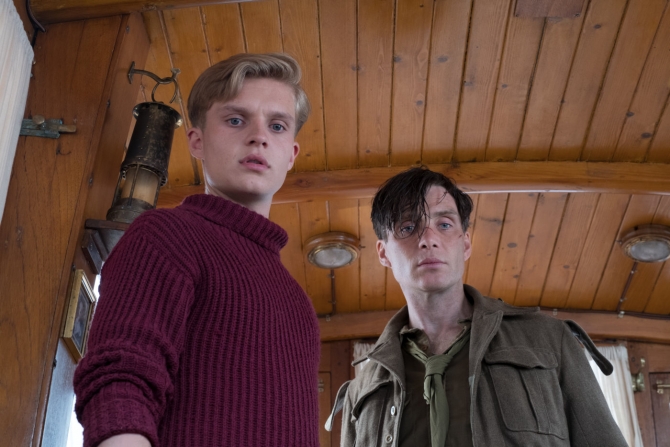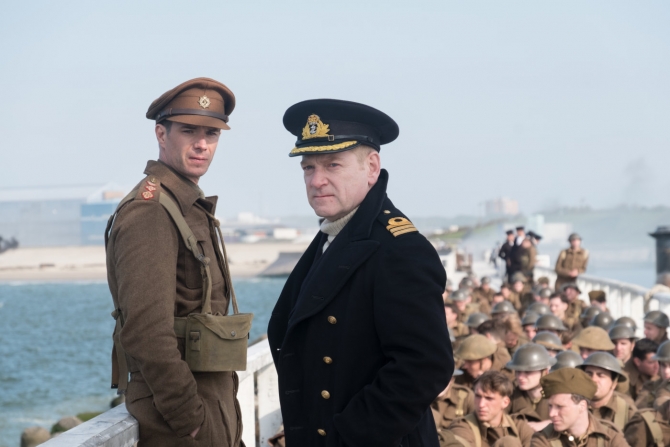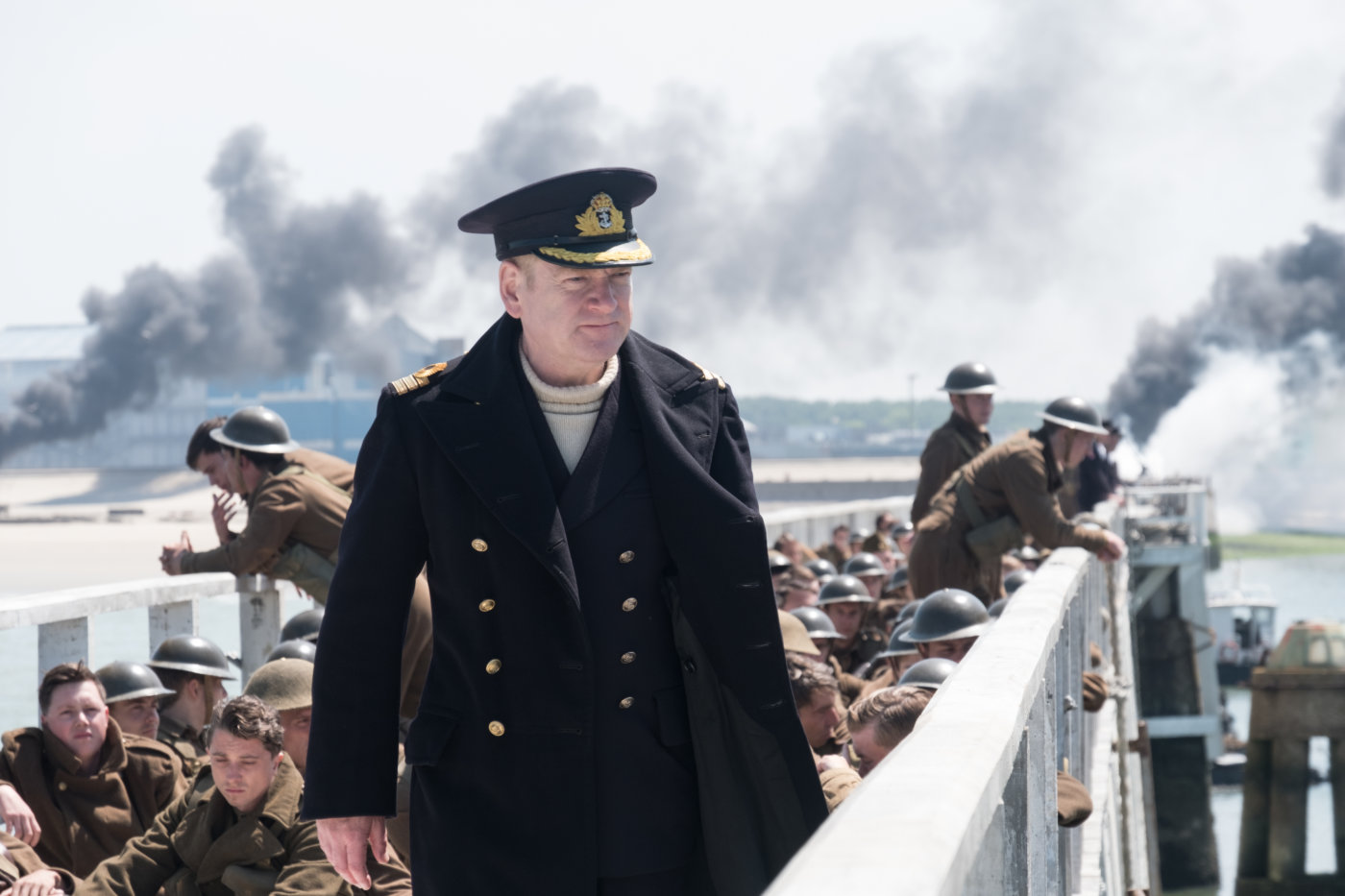NB: The following contains spoilers for Dunkirk.
“You. You are surrounded,” read the leaflets fluttering down on a handful of troops in Dunkirk’s spectacular opening shot. As a way of setting a scene without resorting to a metric tonne of expository dialogue, it’s bold and eerie in its minimalism. What immediately jumps out in writer-director Christopher Nolan’s latest film, in fact, is how stripped down it is.
Some filmmakers might have taken a more grandiose approach to such a momentous historical event – the mass evacuation of occupied France in 1940, which saw as many as 400,000 Allied troops trapped by the German army on the beaches of Dunkirk. And yet, while Dunkirk is far from short on spectacle, Nolan’s movie is remarkable for what it leaves out: dialogue is kept to a minimum; the events that led up to the story’s central crisis is handled with a compact opening crawl; the entire drama plays out in a compact 106 minutes – a far cry from, say, Terrence Malick’s The Thin Red Line, which weighed in at 170 minutes.
Aside from the unfathomable task of mounting a war film on such a scale – the wrangling of boats, ships, planes and hundreds of extras – Nolan appears to have set himself an additional challenge with Dunkirk: make a period war film that feels modern and urgent. The stripped-down approach to the narrative is joined by Hans Zimmer’s grinding, borderline experimental score, which seems to mesh so organically with the deafening bursts of gunfire and roaring explosions that one flows into another, creating a terrifying wall of noise.
Hoyte van Hoytema’s use of handheld photography and lingering close-ups – no small feat, given the weight of IMAX cameras – means we’re constantly seeing events from an individual’s point of view, whether we’re high in the air watching Tom Hardy pilot his Spitfire or down among the foam and corpses with the young soldiers played by Fionn Whitehead and Harry Styles.
Then there’s what might be Nolan’s most striking storytelling decision: to keep the German army off-screen throughout. Sure, we see plenty of Messerschmitts and Heinkel bombers, but we never see the people who pilot them. We see and hear the devastating impact of bullets and bombs, but not the soldiers pulling the triggers. The only time we get a glimpse of German soldiers is during the climax, where Hardy’s pilot is captured – but even here, their faces are out of focus, or enshrouded in shadow.

It’s a decision that takes the emphasis away from the reductive us-versus-them mindset of more simplistic war films, and makes Dunkirk less a film about war than survival. By taking direct conflict out of the equation, Nolan avoids all the things that can provide a kind of emotional release valve in even the most well-meaning war movies. The shoot-outs, the gory squib hits, the big orange explosions, the moments of heroic self-sacrifice – all things that, although we might not necessarily want to admit to it, often provide a shiver of exhilaration in the moment.
In Dunkirk, there are no hordes of faceless Nazi soldiers and no splashes of blood. Bombs land with a devastating shudder, joined by the aftershock of falling sand and seawater, but the typical Hollywood pyrotechnics are otherwise absent. Characters do brave things in Dunkirk – Hardy’s pilot presses on, even with a damaged plane, Mark Rylance putters forth in his plucky little boat – but the film doesn’t over-sentimentalise their bravery. Dunkirk’s characters are simply doing their best in an overwhelmingly frightening situation; what Nolan emphasises, more than just about anything else, is just how young, vulnerable and unprepared most of the soldiers were.
Nolan also obsesses over the mechanical details of a Spitfire, or the precise way in which a ship’s door unlocks and the strength it takes for one person to pull the thing open – but this too underlines the theme of human frailty. Soldiers huddle on a wide-open beach, painfully exposed to the bombs raining down from above. More soldiers cower in a boat, bullet holes tearing through its hull. When a bombed-out British ship tips onto its side, like a bull wounded by a toreador, there’s a devastating sense of weight and scale – which only makes the sense of terror from its crew more palpable.

In some respects, Nolan’s approach could have represented a risk. Its characters are given only scant back stories, often related between falling bombs or rattles of gunfire. There’s no central villain, as such, and certainly no sequences of Hitler standing over maps and arguing with his military advisers about whether he should send in the Panzer tanks. What we get, instead, is a film devoted to achieving one purpose: to put the viewer in the midst of the evacuation. Like Yann Demange’s superb period thriller ’71, Dunkirk uses its protagonists to lead us on a kind of narrative relay race, as the chaos of the extraction tosses us from land to sea to sky.
Dunkirk, then, isn’t a film about conflict, about good guys and bad guys, Nazis and Allies, winners and losers. It isn’t necessarily about “the horror of war” to use a time-worn phrase; it’s about being an ordinary person in dire circumstances that are far beyond your control. It’s about taking an event that is gradually receding from living memory – an event almost imaginable in its scale – and making it feel palpably real.
As a cinemagoer, you are surrounded by Christopher Nolan’s movie, and for those 106, pulse-pounding minutes, it feels as though there’s no escape.

